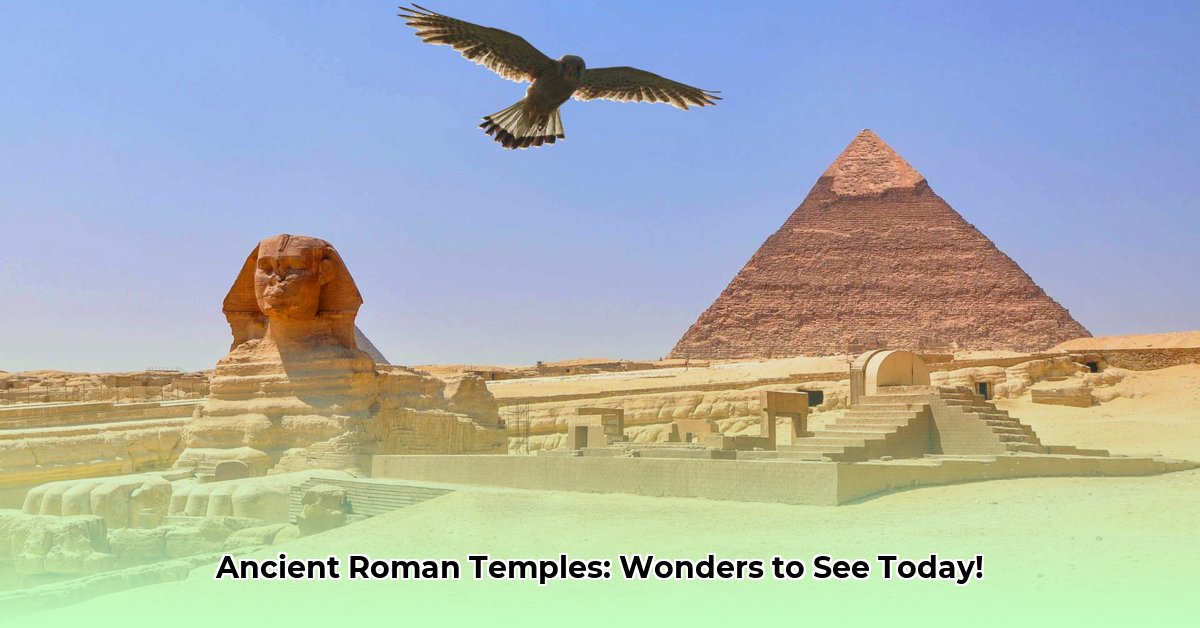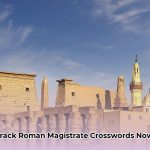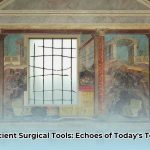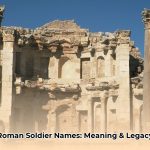Step into the grandeur of the ancient world, and you inevitably encounter the monumental presence of Roman temples. Far from being mere relics, these structures were the pulsating heart of Roman society, embodying deep religious convictions, political power, and astonishing engineering prowess. Beyond the universally recognized Pantheon, a vast network of temples spanned the Roman Empire, each whispering tales of gods, emperors, and daily life. Prepare to embark on a journey through their remarkable design, hidden narratives, and the timeless secrets they hold. For further information, see ancient Roman temples.
Here are three pivotal insights as we explore these architectural marvels:
- Ancient Roman temples served not only as vital religious centers but also as potent symbols of the Empire’s might, technological advancement, and cultural identity.
- Their remarkable preservation across millennia is often attributed to ingenious adaptation, transforming into Christian churches or mosques, showcasing incredible resilience and evolving purpose.
- Roman temple architecture, a masterful synthesis of Etruscan and Greek influences, pioneered innovative techniques like the widespread use of concrete and arches, leaving an indelible mark on global design.
Echoes of Belief, Power, and Innovation
The ancient Roman temple was more than a sanctuary; it was a profound reflection of Roman religious devotion and an undeniable projection of imperial authority. Dedicated to a vast pantheon of gods and goddesses, these structures vividly demonstrated the Roman Empire’s strength, its unparalleled engineering ingenuity, and its capacity for monumental construction. Standing amidst their colossal columns, one cannot help but feel a profound sense of awe at the scale of their ambition.
From Pagan Shrines to Sacred Churches: A Legacy of Survival
A fascinating aspect often overlooked is the reason for the survival of many of these magnificent structures. Their resilience is frequently due to their strategic conversion into Christian churches or, in some regions, mosques. This remarkable adaptive reuse granted them a second life, fundamentally altering their interior spaces and symbolic functions while preserving their core structure. For instance, the conversion often involved walling in porticos, removing internal cella walls to create larger congregational spaces, and adding Christian altars. This transformation, while ensuring physical preservation, also meant the deliberate erasure or concealment of original pagan iconography, offering a poignant testament to shifting spiritual landscapes. The Temple of Romulus in the Roman Forum, for example, was dedicated as a church only in 527 CE, centuries after Christianity’s rise under Constantine, illustrating the slow decline and eventual repurposing of many pagan sites.
The Pantheon: A Feat of Engineering and Enduring Mystery
No discussion of ancient Roman temples is complete without reverence for the Pantheon in Rome. This unparalleled masterpiece stands as a monumental testament to the ingenuity of Roman engineers, renowned globally for its massive, unreinforced concrete dome—the largest of its kind for over a millennium. Its exceptional state of preservation makes it one of the most significant and popular Roman temples to visit. Yet, beyond this iconic landmark, a vast and diverse world of temples awaits discovery, each with its own story and architectural distinctiveness.
Beyond Rome’s Walls: A Global Architectural Footprint
The Roman Empire was geographically vast, encompassing diverse cultures and landscapes. Consequently, its temples mirrored this expansive reach, appearing far beyond the city of Rome itself. Significant structures can be found stretching from Italy to France, Lebanon, Tunisia, Croatia, Armenia, and beyond. This global proliferation highlights how Roman architectural principles were adapted and integrated with local traditions and materials. For example, in regions distant from Rome, temples often incorporated locally sourced stone, underscoring a practical and resourceful approach to their grand construction projects and lending each temple a unique regional character. The Romano-Celtic temples of the Western Empire, often square with ambulatories and minimal classical features, exemplify this cultural synthesis.
Architectural DNA: Dissecting the Roman Temple Form
What defined the quintessential Roman temple in its prime? Here’s a detailed overview of its recurring architectural elements and distinguishing features:
- Elevated Podium: Unlike Greek temples typically resting on a three-step stylobate, Roman temples were characteristically raised on a high, imposing podium, often accessed by a single flight of wide steps at the front. This elevated position enhanced their commanding presence over the urban landscape. The Temple of Claudius, for instance, sat atop twenty steps.
- Frontal Emphasis: Roman temples strongly emphasized their front façade. The main entrance, typically adorned with a deep portico of columns and a triangular pediment, was the primary point of access and visual focus. The sides and rear often received less architectural attention, sometimes featuring engaged columns (half-columns emerging from the wall) or being left largely undecorated.
- Pronaos and Cella: Behind the portico lay the pronaos, an open vestibule leading into the cella, the main inner chamber. The cella housed the cult image of the deity to whom the temple was dedicated, along with altars for offerings. Importantly, ordinary worshipers rarely entered the cella; most public ceremonies, especially animal sacrifices, took place outdoors at an open-air altar in front of the temple, within the sacred precinct (the templum).
- Column Orders: While early Roman temples drew from Etruscan models, later designs extensively adopted Greek classical orders, predominantly Corinthian, but also Ionic and Doric, and the Roman innovation of the Composite order. These columns were not solely decorative but bore the immense structural weight.
- Materials and Innovation: Romans pioneered the widespread use of concrete, a remarkably durable and versatile material that allowed for unprecedented scale, intricate curving forms, and economical construction. This, combined with arches and vaults, fundamentally transformed their architectural capabilities. Marble and local stone were also extensively utilized.
- Statuary and Color: Temples were originally much more vibrant than their surviving ruins suggest. Roof lines were adorned with extensive painted statuary (acroteria), and entablatures were decorated with elaborate terracotta revetments and antefixes, all brightly painted in vivid colors like scarlet or vermilion. Pediments often contained sculptural groups, though few fragments remain.
Lingering Mysteries and Ongoing Research
Even monumental structures like the Pantheon continue to present intriguing questions for scholars. Why, for instance, was it dedicated to all the gods? Some theories propose a genuine gesture of inclusive worship, while others suggest a political motive, perhaps linked to the deification of emperors or a grand dynastic sanctuary for Augustus and his family. These enduring enigmas continually fuel historical and archaeological research, inviting new interpretations of ancient Roman beliefs and practices.
Another fascinating debate surrounds the Temple of Dougga in Tunisia. While recognized as part of a remarkably preserved Roman small town, its precise status as the “best-preserved Roman sanctuary” versus “best-preserved temple within its town” underscores the nuanced interpretations arising from ongoing archaeological study. Consulting diverse sources remains crucial for a comprehensive understanding.
Planning Your Temple Tour: Essential Tips for the Explorer
Contemplating a pilgrimage to an ancient Roman temple? Here are essential, actionable tips to make your journey truly unforgettable and enriching:
- Conduct Thorough Research: Before your visit, delve into the specific history, architectural nuances, and unique stories of the temples on your itinerary. This pre-trip knowledge will significantly deepen your appreciation of the sites.
- Prioritize Comfortable Footwear: You will undoubtedly be covering significant distances on rough terrain, so comfortable and supportive shoes are absolutely essential for an enjoyable experience.
- Stay Hydrated: Especially during warmer months, carrying ample water is crucial. Many sites offer limited shade or facilities.
- Consider a Knowledgeable Guide: A local expert can illuminate the ancient ruins with captivating narratives, historical context, and insights you might otherwise miss, truly bringing the sites to life.
- Embrace Respectful Exploration: Remember that these are ancient, often sacred places. Treat them with the utmost care and reverence, adhering to all site regulations and preserving them for future generations.
- Visit During Off-Peak Hours: To maximize your experience and avoid large crowds, aim to visit popular temples early in the morning or late in the afternoon.
The Future of These Ancient Wonders
Ensuring the preservation and accessibility of these incredible historical buildings for future generations is a paramount responsibility.
| Stakeholders | Short-Term (0-1 Year) | Long-Term (3-5 Years) |
|---|---|---|
| Tourism Organizations | Implement targeted digital marketing campaigns highlighting lesser-known Roman temples to disperse tourist traffic and alleviate pressure on major sites. | Invest significantly in advanced virtual reality (VR) and augmented reality (AR) experiences, allowing global audiences to virtually explore temples as they appeared in antiquity, enhancing educational outreach and promoting cultural heritage. |
| Archaeological & Conservation Bodies | Prioritize systematic documentation and immediate protective measures for Roman temple sites vulnerable to environmental degradation, particularly in coastal or seismically active regions. | Develop comprehensive, long-term conservation plans utilizing cutting-edge material science to mitigate decay, actively engage local communities in preservation efforts, and integrate archaeological findings into public education. |
| Educators | Integrate comprehensive studies of Roman temples into history, art, and architecture curricula, emphasizing their multifaceted roles and enduring cultural impact. | Create accessible, multi-platform educational resources (e.g., interactive online courses, documentaries) that explore the profound global influence of Roman architectural principles and their relevance in contemporary design. |
How Roman Temples Evolved Architecturally
Key Takeaways:
- Roman temple architecture underwent a dynamic evolution, drawing foundational influences from both Etruscan and Greek traditions, then innovating distinctly.
- The revolutionary integration of concrete and the widespread use of arches significantly enhanced Roman construction, enabling unprecedented structural scale, durability, and formal flexibility.
- Core architectural elements, including the elevated podium, inviting portico, and sacred inner cella, were consistently featured, establishing a recognizable Roman template.
- Temples uniquely served dual roles, functioning simultaneously as sacred religious centers and integral components of Roman civic and political life, often incorporating administrative functions.
- Roman architects demonstrated remarkable adaptability, frequently incorporating and blending local building styles into their designs, creating fascinating regional variations across the empire.
- The deliberate adherence to past architectural designs and established forms served as a strategic tool for political control, reinforcing authority and fostering a strong sense of cultural continuity.
The Genesis: Etruscan, Greek, and Roman Synthesis
The compelling narrative of how Roman temples evolved architecturally begins with their foundational design principles borrowed from the Etruscans and Greeks. The Romans, known for their pragmatic adaptability, skillfully integrated the Etruscan emphasis on high, accessible podiums and deep front porches with the Greek aesthetic of stately columns, pediments, and refined proportions. This ingenious fusion resulted in a distinct Roman temple form that prioritized a strong frontal façade, differing from the equally treated peripteral colonnades of many Greek temples. This synthesis reflects a highly practical and resourceful Roman mindset, consistently seeking effective and imposing architectural solutions.
The Concrete Revolution and Arches
What truly catalyzed Roman architectural innovation, particularly in temples, was the widespread and ingenious application of concrete. This groundbreaking material, created from volcanic ash, lime, and aggregate, provided unparalleled strength, flexibility, and rapid construction capabilities. Coupled with their mastery of the arch and vault, concrete allowed Roman architects to design larger, more expansive interior spaces and construct monumental domes and soaring structures previously unimaginable. These advancements were not merely about practicality; they were about realizing ambitious architectural visions that set Roman engineering apart and fostered the construction of colossal temples that still impress today.
Standardized Layouts and Multifunctionality
Across the vast Roman Empire, a recognizable structural template for temples emerged: a prominent podium, typically accessed by a single flight of steps at the front; a deep pronaos (porch) with multiple rows of columns; and the enclosed cella within, housing the deity’s cult image. This consistent layout created a familiar, authoritative presence in urban centers. But Roman temples were never solely religious edifices. They frequently served as vital hubs for Roman civic life, hosting critical religious ceremonies, pivotal Senate meetings (like the Temple of Saturn, which also housed the state treasury), and public proclamations. This remarkable multi-functionality profoundly underscores the temple’s overarching importance within both the sacred and secular fabric of Roman society.
Regional Adaptations and Cultural Blending
Roman architects were adept at incorporating elements that resonated with and were expected by local populations in conquered territories. This adaptability led to captivating hybrid structures. The aforementioned Romano-Celtic temples, common in Roman Britain and Gaul, deviated significantly from classical Roman norms, often being square or circular with an ambulatory (a covered walkway) and lacking overt classical features, demonstrating continuity with earlier local religious practices. This willingness to blend styles powerfully illustrates both Roman pragmatism and their remarkable cultural awareness.
The Weight of the Past: Architectural Precedent and Imperial Cult
The consistent adherence to established architectural forms was not merely an aesthetic choice; it was a deliberate strategy for asserting control and fostering continuity across the sprawling empire. As Rome transitioned from Republic to Empire, the function and design of its temples adapted. The rise of the Imperial cult led to the construction of caesarea (temples dedicated to deified emperors), which often became the central, most prominent temple in new provincial Roman towns, replacing older state spending on temples to traditional gods. These imperial temples typically maintained conventional Roman styles regardless of local traditions, reinforcing centralized authority.
Enduring Influence on Global Architecture
The architectural legacy of Roman temples extends far beyond the confines of the Roman Empire. Their fundamental principles, structural innovations, and aesthetic grandeur continue to inspire architects and designers globally. From the Renaissance’s reinterpretation of classical forms (e.g., Andrea Palladio’s villas and churches like San Giorgio Maggiore utilizing superimposed temple fronts) to Neoclassical movements (e.g., La Madeleine in Paris, the White House), Roman architectural concepts have been consistently revived and reinterpreted. Even the concept of a temple-front façade for diverse building types, common in Baroque and Georgian churches (like St Martin-in-the-Fields with its bold steeple), owes its origins to Roman models. This enduring influence stands as a profound testament to the lasting power and timeless appeal of Roman design on the built environment worldwide.
Uncovering Lesser-Known and Lost Roman Temples
Rome, beyond its instantly recognizable landmarks, conceals countless ancient sites and historical layers, including many temples whose remains are less visible or whose original functions are still debated. For the intrepid explorer, these sites offer unique and intimate glimpses into various aspects of Roman life and religious practices.
Lesser-Known Temples in Rome and Beyond
- Temple of Portunus (Rome): Located in the Forum Boarium, this remarkably preserved temple, also known as the Temple of Fortuna Virilis, dates to the 2nd-1st centuries BCE. Originally dedicated to the river god Portunus, its rectangular plan with Ionic columns offers a clear example of republican-era architecture.
- Temple of Hercules Victor (Rome): Situated adjacent to the Temple of Portunus, this is Rome’s oldest surviving marble temple, built around 120 BCE. Its circular form, encircled by twenty Corinthian columns, led to its misidentification as the Temple of Vesta. It was later converted into a church, ensuring its preservation.
- Temple of Apollo Sosianus (Rome): Found near the Theater of Marcellus, this temple, rebuilt in 32 BCE by Gaius Sosius, showcases significant marble elements and deep historical layers, including its original dedication during a plague in 433 BCE.
- Temple of Minerva Medica (Rome): Despite its misleading name, this 4th-century circular building with a dome was likely a pavilion within a private garden, potentially part of the Horti Liciniani or Horti Pallantiani. It stands as an impressive example of late imperial Roman architecture, demonstrating structural experimentation.
- Mithra Temples (Rome): Scattered beneath modern Rome, these underground shrines dedicated to the Persian god Mithras offer a fascinating contrast to public temples. Examples at the Baths of Caracalla, Circus Maximus, and under San Clemente Basilica provide intimate insights into a popular mystery cult.
- Temple of Augustus and Livia (Vienne, France): This well-preserved temple, built between 20-10 BCE, closely resembles the Maison Carrée and highlights the spread of imperial cult worship throughout the provinces. Its conversion to a church in the 5th century ensured its survival.
- Temple of Augustus (Pula, Croatia): Another exceptionally well-preserved temple dedicated to the first Roman emperor, built between 2 BCE and 14 CE. Its pristine condition has allowed it to serve as a gallery for ancient artifacts.
- Garni Temple (Armenia): A fascinating 1st-century CE Greco-Roman colonnaded building, likely dedicated to Mithras. Though largely reconstructed after an earthquake, it represents a unique example of Roman architectural influence in Armenia.
- Temple of Bel (Palmyra, Syria): Though tragically damaged, the former grandeur of this colossal temple, dedicated to the supreme Semitic god Bel, showcased a unique fusion of Roman and Eastern architectural styles.
- Forum Temples at Sbeitla (Tunisia): Unlike the traditional single Capitolium, Sbeitla uniquely features three distinct temples dedicated to Jupiter, Juno, and Minerva, arrayed prominently in its forum.
- Temple of Venus Genetrix (Djemila, Algeria): An unrestored ruin with intact walls and columns, offering a rare, unvarnished glimpse into original Roman architecture in a compact, mountainous setting.
Insights from “Lost” Temples
While some temples like the Pantheon stand in almost perfect form, many more are reduced to foundations or mere fragments, their full stories pieced together from archaeological evidence and ancient texts. The two Temples of Jupiter Stator in Rome, for example, built in the 3rd and 2nd centuries BCE respectively, are now entirely lost, known only through historical accounts. Similarly, the majestic Temple of Diana Aventina, ordered by Servius Tullius, and the Temple of Magna Mater on the Palatine Hill, a center for the cult of Cybele, survive only as meager remains or through ancient representations. These “lost” temples underscore the constant challenges of historical preservation and the ongoing detective work of archaeology.
These magnificent temples, whether well-preserved or largely lost to time, serve as tangible links to a civilization that profoundly shaped the very course of Western history. Each offers a unique and invaluable glimpse into the religious convictions, architectural brilliance, and cultural values that defined the Roman people. To walk among these ancient stones is to vividly imagine the rituals and daily life of centuries past, connecting directly with a bygone era.










